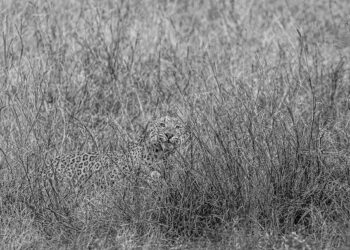Reviving California’s Indigenous Wildflower Populations: The Role of Dead Grass Removal
Understanding the Importance of Native Wildflowers
In California, the melodious sights of native wildflowers are not just beautiful; they play a vital role in the ecosystem. These indigenous species contribute significantly to biodiversity, support wildlife habitats, and enhance soil health. However, many of these flowers have been threatened due to human activities and climate change.
The Problem with Dead Grass Accumulation
Over time, a buildup of dead grass can create an adverse environment for wildflowers. This detritus covers the soil, blocking sunlight and preventing seeds from germinating effectively. Additionally, this thick layer can lead to increased competition for nutrients as it may decompose slowly, further suffocating younger plants that rely on rich topsoil.
Innovative Solutions: Raking as a Restoration Method
One effective way to rejuvenate areas plagued by dead grass is through raking. By removing these decomposing remnants manually or with tools designed for disturbance-free practices, we allow more light and air to reach the soil surface. This act encourages dormant seeds in the seed bank to sprout and thrive again.
Step-by-Step Guide to Effective Raking
- Choose the Right Time: Ideally tackle this task during early spring when native seeds begin their natural cycle.
- Use Suitable Tools: Equip yourself with rakes or specialized hand tools that will minimize damage while maximizing efficiency.
- Clear Strategically: Focus on areas where wildflower growth has historically occurred but has been hindered by excessive grass build-up.
- Monitor Progress: After raking, keep track of any signs of new wildflower growth which typically appears within weeks.
Current Statistics Highlighting Decline and Recovery Efforts
Recent studies indicate alarming declines in California’s native flora—a staggering 30% decrease over recent decades due largely to habitat loss and invasive species intrusion (2023 report from Cal Flora). Yet hope remains strong; community efforts across various regions have yielded positive outcomes where restoration techniques emphasize ecological balance—showcasing upsurges in certain flower populations by over 50% within specific reserves after targeted interventions were put into practice.
Conclusion: A Community Driven Approach
Restoration efforts are most effective when executed collectively within communities driven by conservation initiatives aimed at preserving these crucial elements of our natural landscape. By actively participating in processes like dead grass removal through raking methods—coupled with raising awareness about native plants’ value—we not only help nurture our ecosystems but also ensure that future generations enjoy California’s vibrant floral heritage once more.
Through dedicated actions toward maintaining our environmental integrity today, we pave pathways for spectacular blooms tomorrow!















![[News] Japan Develops 10nm Nanoimprint Technology, with Potential to Tackle EUV Bottleneck – TrendForce](https://earth-news.info/wp-content/uploads/2025/12/329851-news-japan-develops-10nm-nanoimprint-technology-with-potential-to-tackle-euv-bottleneck-trendforce-360x180.jpg)















